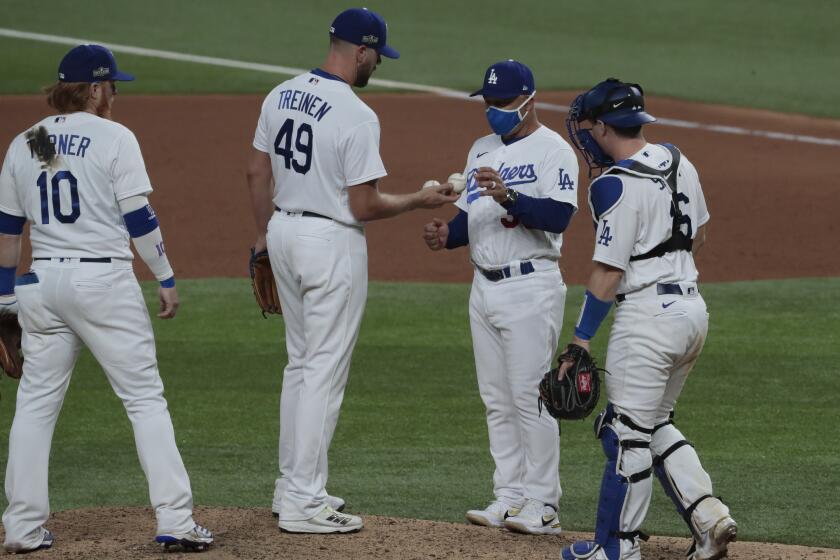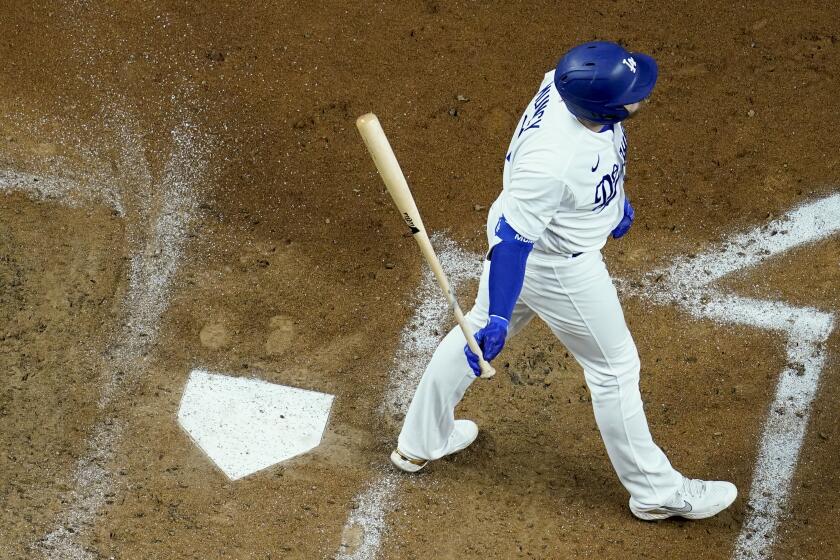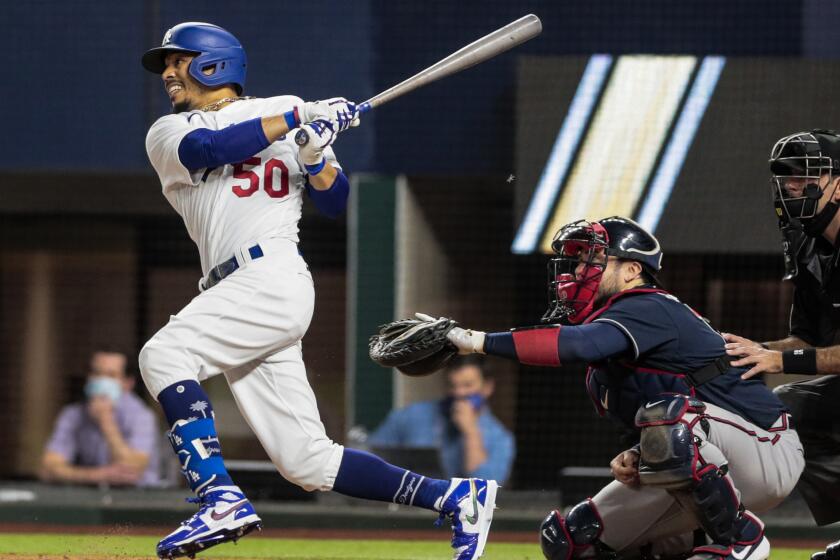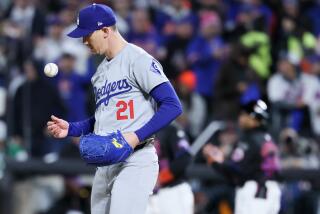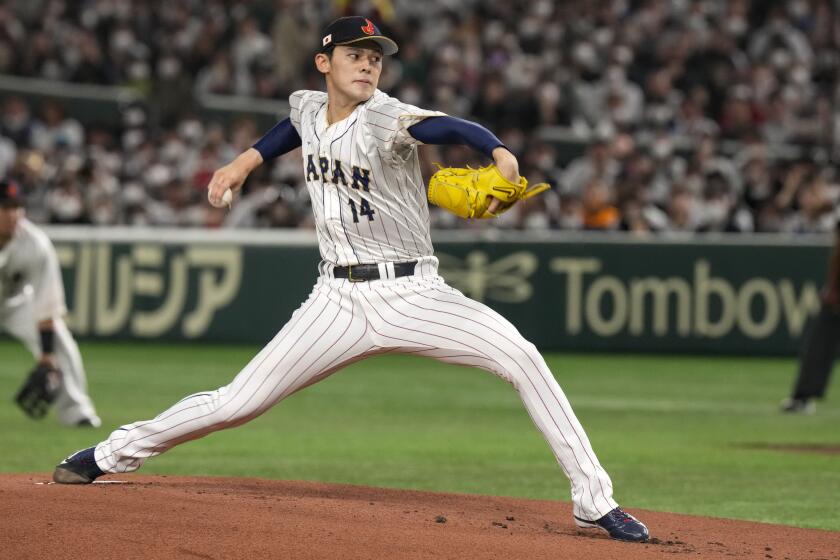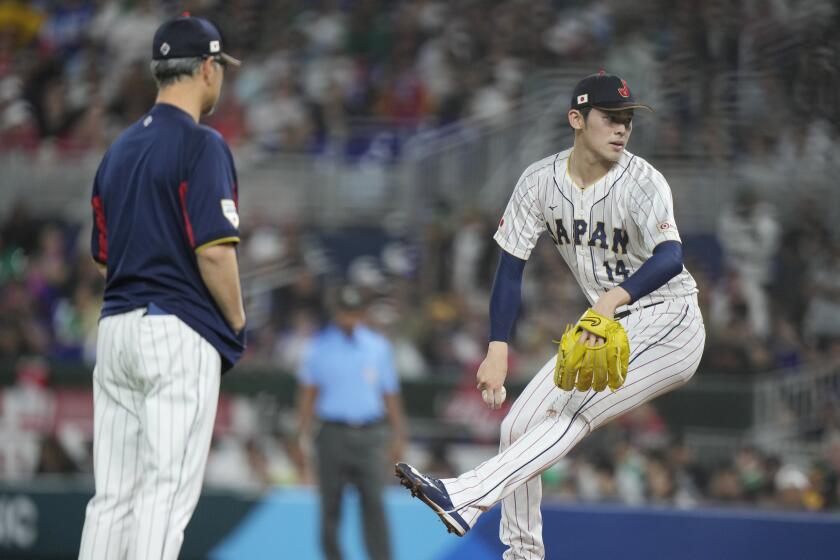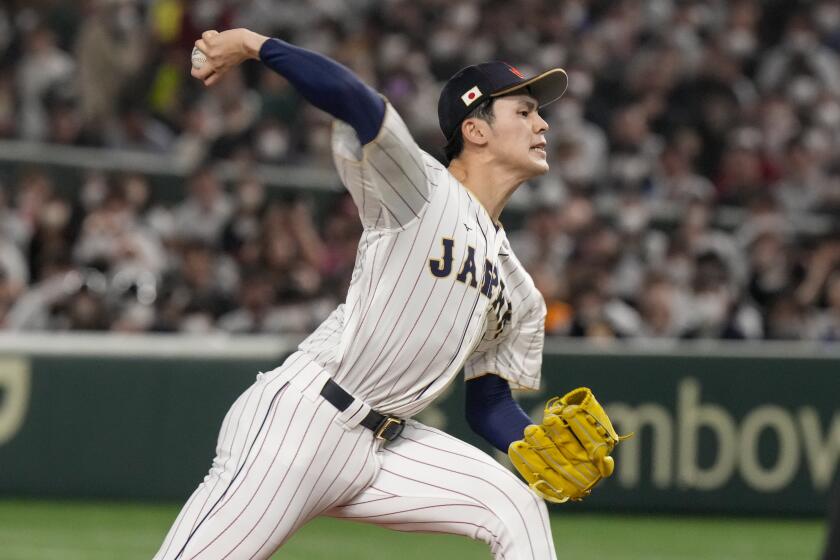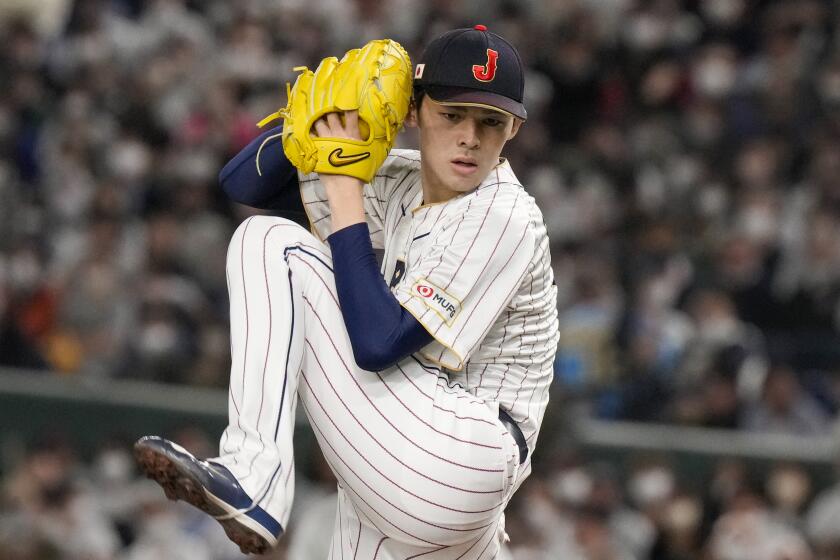Dodgers pitchers have a need for speed, and Braves hitters feast on fastballs
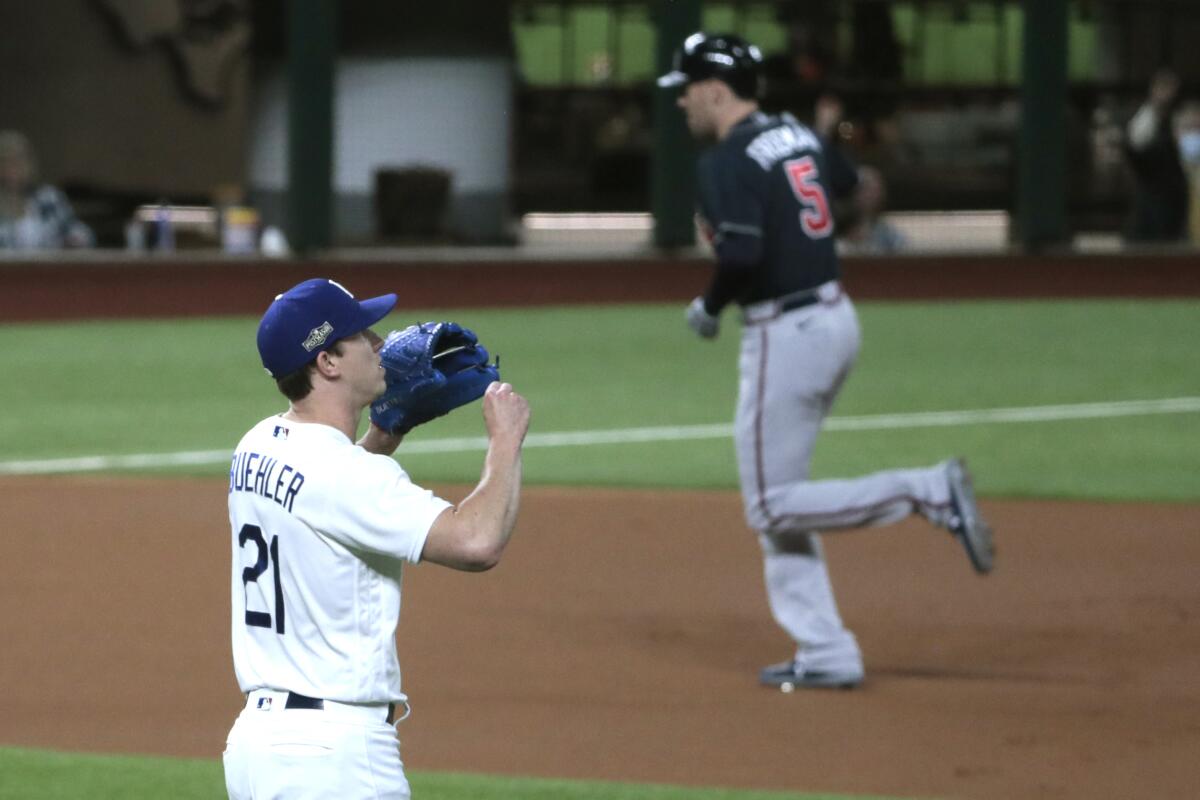
- Share via
The first inning of the first game of this National League Championship Series showcased a strength-against-strength matchup that could become a key factor in who wins the pennant.
Walker Buehler had Freddie Freeman right where he wanted him Monday night in Arlington, Texas.
The Dodgers starter was ahead 1-and-2 in the count against the Atlanta Braves’ MVP contender. Catcher Will Smith called for the most-used pitch in Buehler’s arsenal to put Freeman away. The right-hander wound up and sent a 97-mph four-seam fastball streaking toward the plate.
Then he watched as Freeman sent it screaming over the right-field wall for a solo home run.
Buehler appeared to miss his spot, failing to elevate a fastball that should have been farther up and farther in. But he was also beaten trying to bury Freeman with his best pitch.
The Dodgers’ bullpen implodes in the ninth inning in a 5-1 loss to the Atlanta Braves in Game 1 of the National League Championship Series.
Tuesday’s second game saw fewer Dodgers fastballs thrown with split-change specialist Tony Gonsolin getting the start. But in the remainder of the series, the fastball matchup will likely come into focus again.
This season, Buehler and most other Dodgers pitchers have loved throwing fastballs.
The Braves, however, love to feast on them.
Only one team this season threw fastballs, sinkers and cutters at a higher combined rate than the Dodgers at 63.1%, according to Major League Baseball’s Statcast system, and no club averaged a harder fastball velocity than their 94.7 mph. The pitching staff was successful doing so too, limiting opponents with those pitches to a .221 batting average and .373 slugging percentage, both of which led the majors.
The Braves, however, thrived against the hard stuff. Their .308 batting average against fastballs, sinkers and cutters topped the big leagues by 10 points. Their .552 slugging percentage trailed only the Dodgers.
Against pitches of 97 mph or higher, the Braves were even better, leading the majors with a .553 slugging percentage and ranking second with a .309 average.
Entering the series, manager Dave Roberts acknowledged the Dodgers’ need to be sharp with their fastballs — the pitch the majority of their hard-throwing staff relies on most.
“Nowadays, we always talk about timing a bullet,” Roberts said. “You’ve still got to make quality pitches regardless of if it’s 97 or 101 or whatever. If it’s not located, guys are gonna still square it up.”
In Monday night’s 5-1 series-opening loss, the Dodgers found that out firsthand. All three of the Braves’ home runs came against fastballs, each one having missed its spot in a two-strike pitcher’s count.
The Dodgers’ lack of offense in Game 1 of the NLCS against the Atlanta Braves is a worrying yet all too familiar development for the team.
And there are few teams better than the Braves at making you pay for missing your spot.
Freeman batted .431 with nine home runs this season swinging at fastballs, cutters and sinkers. His homer against Gonsolin on Tuesday came on a splitter, but his RBI single later in the game was on a low fastball from Pedro Báez that he fought off. Designated hitter Marcell Ozuna batted .403 with a team-high 13 homers against those three pitches. And six of the Braves’ nine starters hit at least .300 when challenged with heaters.
Freeman said punishing those mistakes will be particularly important in this series.
Mookie Betts has struggled against left-handed pitching this season, as seen in Game 1 vs. the Braves. Dodgers manager Dave Roberts isn’t concerned.
“They’ve got power arms,” he said of the Dodgers. “Every guy out of their bullpen seems to be 95-plus. It’s gonna be hard to string hits together. That’s what the playoffs is all about. It comes down to the home run because getting three hits against a staff like this is gonna be difficult.”
The Dodgers’ rotation also leaned on fastballs this season. Game 3 starter Julio Urías threw his mid-90s, high-spin-rate four-seamer more than 55% of the time. An increase in fastball velocity helped Clayton Kershaw — who was scratched from a scheduled Game 2 start but could be back as soon as Game 4 — have a strong season. And Dustin May, who could either start or continue pitching in a key swingman role, is defined by his triple-digit heat.
To come back and challenge in the series, the Dodgers’ effectiveness with the fastball might have to be as strong as it’s been all year. As Buehler put it Monday night, reflecting on the home run he allowed to Freeman, “You can’t make mistakes like that in games like this.”
Harris reported from Los Angeles.
More to Read
Are you a true-blue fan?
Get our Dodgers Dugout newsletter for insights, news and much more.
You may occasionally receive promotional content from the Los Angeles Times.

